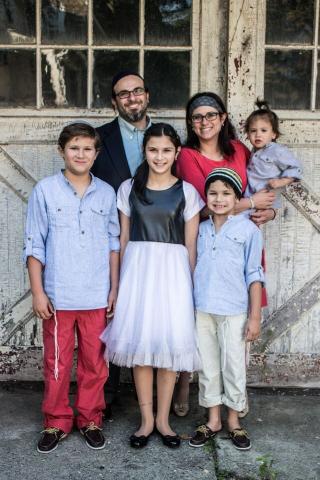by Rachel Loonin Steinerman
The torch was officially passed last year when my husband and I hosted our first seders. We had similar seders from our own childhoods – we made our way through yellow deer-covered haggadahs and sang similar traditional tunes from 1980s Jewish schools. Participants took turns reading either in Hebrew or English. “What page are we on?” was more pointedly asked than the Four Questions. Regardless of the haggadah, progress of the seder was measured by how close we got to the good stuff: the washing of the hands, the motzei over the matzah, and maror, followed by my Grandpa Archie’s famous declaration “and now we eat!”
We honored our childhood traditions, but I was inspired by stories of esteemed rabbis who make the children the center of their whole seder. Interactivity is key.
By now many of us have enacted the 10 plagues in a more charades-like way. Green plastic frogs, flying ping pong (hail) balls, and even fake blood are becoming standard seder fare. Walking around the table in Birkenstocks and sacks on backs is a custom of some Sephardic Jews which is making rounds.
Here are some tips I have for making a seder meaningful for families with young and school aged children:
1. Involve the children in the seder prep. This year, we will form strong memories while crossing off items on my seder day list: prepare the seder plate, put out the matzah, make charoset, put flowers on the table, prepare a few varieties of bitter herbs, decorate the table with plastic plagues.
2. Kids should not show up hungry. I made a pan of meatballs for all the kids and even hungry adults to eat an hour or two before the seder. Nobody needs to grumble for food or peek ahead in the haggadah for when the meal will begin.
3. Close the Passover books. Listen to our children. For those who bring things to the table – whether it’s a haggadah they made in school or a seder plate craft they made at a Passover fair, give them each time and space to share this with the group gathered for the seder. Keep things open ended and ask children to participate in their own way.
4. Bring the seder to life. You know the part where you’re supposed to feel like you personally left with Egypt? Who feels liberated in a dining room chair? Is the pillow behind your back really a sign of comfort? If I can’t be at Canyon Ranch, at least we can tell the story in the living room, or wherever we are more relaxed in the house.
5. Keep favorite traditions of the past. Part of the seder magic is telling and hearing the same stories, teachings and jokes year after year. Hold on to the best ones your family has produced and don’t worry about the rest.
The seder meal plays such an integral role to so many people’s Jewish identity. This year, let’s make it epic for our children.
Rachel Loonin is a Mama Rager in Lower Merion to Nistar, Elimelech, Ezra and Levi. Her life partner is her husband Joshua Steinerman. An Early Childhood educator by training, she is a Social Entrepreneur and worked in legal research, new business development, and marketing. She is an advocate for her children’s school library. She is an activist, recycler, and live-music lover. She writes the blog called Whole Phamily and runs an Etsy shop and Instagram presence by the same name. She believes that every Jewish person has a unextinguishable internal burning flame and that by lighting Shabbat candles, this golden glow will get brighter and brighter. She is thrilled that, after all these years, she can eat quinoa, a legit vegan Kosher for Passover protein. She sticks to gefilte fish, brisket, fruit slices and jelly rings at the seders.




